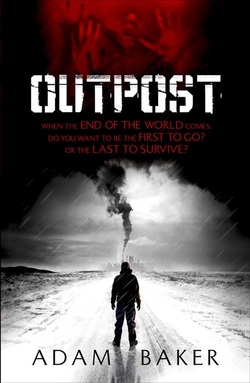ADAM BAKER'S DOOMSDAY LIST
To celebrate the release of his up coming horror novel OUTPOST, author ADAM BAKER has taken over the Features page to bring you his ultimate list of Doomsday films.
Outpost by Adam Baker is published by Hodder & Stoughton in trade paperback on
April 14th, priced £12.99.
Outpost by Adam Baker is published by Hodder & Stoughton in trade paperback on
April 14th, priced £12.99.
The
Doomsday List
These are my nightmares. I grew up during the last years of the cold war. Childhood played out under the threat of Armageddon. If I want to scare myself, if I want to be truly terrified, I don’t reach for Halloween or The Exorcist. I open the DVD cabinet and reach for these visions of apocalypse.
These are my nightmares. I grew up during the last years of the cold war. Childhood played out under the threat of Armageddon. If I want to scare myself, if I want to be truly terrified, I don’t reach for Halloween or The Exorcist. I open the DVD cabinet and reach for these visions of apocalypse.
THREADS (1984)
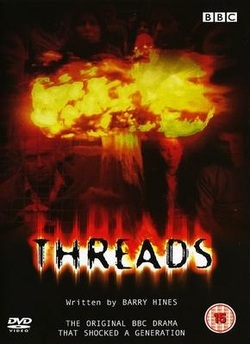
Anyone
old enough to have been watching TV in 1984 will instantly lose bladder control
at the very mention of Threads. It traumatised a generation. It’s
possibly the most downbeat, relentlessly horrifying piece of apocalyptic
film-making to hit the small screen.
The film was made by the BBC at the height of the cold war. The Soviet Union had invaded Afghanistan and the world lived under the day-by-day threat of nuclear annihilation.
Threads portrays the human consequences of World War III. We observe a bunch of Sheffield families as they struggle to survive a nuclear blast and its aftermath. We see a world in ruins, the remnants of humanity quickly reduced to medieval feudalism as they struggle cope with a nuclear winter set to last centuries.
The film may have dated, but the central image of a mushroom cloud slowly unfurling over a drab British high street is unforgettable.
The film was made by the BBC at the height of the cold war. The Soviet Union had invaded Afghanistan and the world lived under the day-by-day threat of nuclear annihilation.
Threads portrays the human consequences of World War III. We observe a bunch of Sheffield families as they struggle to survive a nuclear blast and its aftermath. We see a world in ruins, the remnants of humanity quickly reduced to medieval feudalism as they struggle cope with a nuclear winter set to last centuries.
The film may have dated, but the central image of a mushroom cloud slowly unfurling over a drab British high street is unforgettable.
ON THE BEACH (1959)
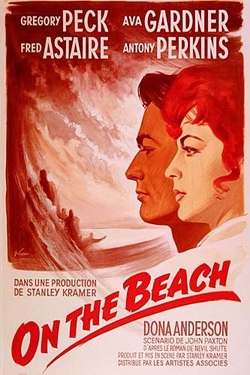
Based
on the novel by Nevil Shute, this fifties melodrama feels astonishingly modern,
and packs an incredibly emotive punch that CGI disaster movies like 2012 and The Day After Tomorrow can’t hope to match.
The film is set in Melbourne, Australia. A disparate group of characters enjoy an idyllic round of cocktail parties and dinners. But we quickly learn that the northern hemisphere of the globe has been destroyed in a nuclear conflagration, and a lethal radiation cloud is slowly advancing south. The apparently carefree inhabitants of Australia are the only human left alive and, in six months, they too will die a slow, lingering death of radiation poisoning. We follow the characters (cool cast: Gregory Peck, Ava Gardner, Fred Astaire, Anthony Perkins) as they live out their final days, trying to make sense of their lives before radiation levels rise and it is time to swallow a cyanide pill.
The final images of the film, a montage of empty streets viewed to the plaintive strains of Waltzing Matilada, are incredibly haunting.
The film is set in Melbourne, Australia. A disparate group of characters enjoy an idyllic round of cocktail parties and dinners. But we quickly learn that the northern hemisphere of the globe has been destroyed in a nuclear conflagration, and a lethal radiation cloud is slowly advancing south. The apparently carefree inhabitants of Australia are the only human left alive and, in six months, they too will die a slow, lingering death of radiation poisoning. We follow the characters (cool cast: Gregory Peck, Ava Gardner, Fred Astaire, Anthony Perkins) as they live out their final days, trying to make sense of their lives before radiation levels rise and it is time to swallow a cyanide pill.
The final images of the film, a montage of empty streets viewed to the plaintive strains of Waltzing Matilada, are incredibly haunting.
FAIL SAFE (1964)
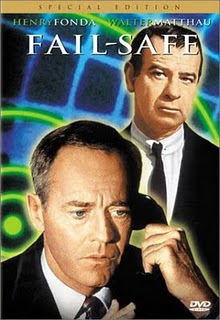
A
mechanical glitch causes a squadron of American bombers to be dispatched deep
into Soviet territory to deliver their payload of hydrogen bombs. The film follows the real-time struggle of
the US President, played by Henry Fonda, and his team as they battle to re-call
the planes before they reach their targets.
Sound familiar?
It’s pretty much the same plot as Doctor Strangelove, which came out the same year. Strangelove hit the screens first and was a big hit. Failsafe got excellent reviews, but was over-shadowed by Kubrick’s movie. Which is a shame, because the nerve-shredding, race-against-time drama of Failsafe make it a neglected classic.
Don’t expect a happy ending.
Sound familiar?
It’s pretty much the same plot as Doctor Strangelove, which came out the same year. Strangelove hit the screens first and was a big hit. Failsafe got excellent reviews, but was over-shadowed by Kubrick’s movie. Which is a shame, because the nerve-shredding, race-against-time drama of Failsafe make it a neglected classic.
Don’t expect a happy ending.
WHEN THE WIND BLOWS (1986)
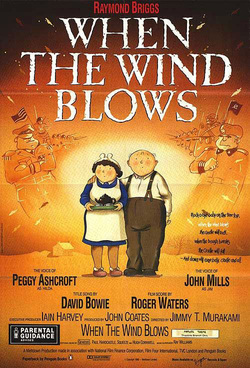
On
the face of it, a jolly kid’s cartoon written by the same bloke (Raymond
Briggs) who wrote The Snowman and Fungus the Bogeyman. But the plot is so wrist-slashingly
depressing you might have to watch The
Road just to cheer yourself up.
The story is simple enough. An elderly couple struggle to follow absurd civil defence guidelines (conserve water, switch off the gas) as they succumb to radiation sickness in the aftermath of a nuclear strike.
There is no hope, no redemption. Just a slow descent into horror and darkness.
The story is simple enough. An elderly couple struggle to follow absurd civil defence guidelines (conserve water, switch off the gas) as they succumb to radiation sickness in the aftermath of a nuclear strike.
There is no hope, no redemption. Just a slow descent into horror and darkness.
PROTECT AND SURVIVE (1981)
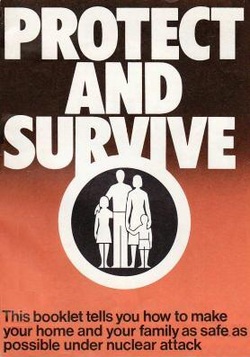
A
DVD collection of public information films from the early eighties might sound
like a snooze-fest rather than an hour of pant-wetting terror. But this is the real deal. These films were to be broadcast on British TV
if a nuclear strike was deemed to be likely within a seventy-two hour
period.
The films were produced by Richard Taylor Cartoons, an animation company that had produced a well-know series of Charlie Says public information films as well as the children’s cartoon series Crystal Tips and Alistair. Titles included What to Do When the Warnings Sound, Make Your Refuge Now, and Life Under Fall-Out Conditions. The final film of the series, Casualties, explains how to dispose of a dead family member:
‘If anyone dies while you are kept in your fallout room, move the body to another room in the house. Label the body with name and address and cover it as tightly as possible in polythene, paper, sheets or blankets. Tie a second card to the covering. The radio will advise you what to do about taking the body away for burial. If however you have had a body in the house for more than five days, and if it is safe to go outside, then you should bury the body for the time being in a trench, or cover it with earth, and mark the spot of the burial.’
These prosaic little films might have been the requiem of the human race.
The films were produced by Richard Taylor Cartoons, an animation company that had produced a well-know series of Charlie Says public information films as well as the children’s cartoon series Crystal Tips and Alistair. Titles included What to Do When the Warnings Sound, Make Your Refuge Now, and Life Under Fall-Out Conditions. The final film of the series, Casualties, explains how to dispose of a dead family member:
‘If anyone dies while you are kept in your fallout room, move the body to another room in the house. Label the body with name and address and cover it as tightly as possible in polythene, paper, sheets or blankets. Tie a second card to the covering. The radio will advise you what to do about taking the body away for burial. If however you have had a body in the house for more than five days, and if it is safe to go outside, then you should bury the body for the time being in a trench, or cover it with earth, and mark the spot of the burial.’
These prosaic little films might have been the requiem of the human race.
